How to grow mustard microgreens on a windowsill?
At home, mustard microgreens are grown according to the same rules as other crops. Pre-purchase seeds, germinator and substrate. The crop of microgreens is removed when 2 true leaves appear on the seedlings.
You can plant different types of mustard - red and white. Both varieties differ not only in color, but also in useful properties. The taste of this microgreen is spicy, spicy.
What are microgreens?
The hobby of growing microgreens came to Russia from the West following the fashion for healthy eating. This type of product has a second name - microgreen (from the English microgreen).
Do not confuse microgreens with seedlings. Sprouted seeds are consumed at the stage of appearance of cotyledons together with the embryo and root.
To obtain microgreens, you should wait until the seedlings grow to a height of 6–12 cm and form the first pair of true leaves. This process takes 1–2 weeks, depending on the culture. The roots remaining after growing the microgreen are discarded. Only leaves and stems of plants are eaten.
Do not overexpose greens, otherwise it loses some of its useful properties and becomes coarse.
About 200 crops are used today for planting microgreens:
- green;
- salad,
- cereals;
- vegetable (not all).
According to scientific data, at the stage of appearance of 2 true leaves, the plant contains tens of times more vitamins, minerals and biologically active substances in comparison with adult specimens and seedlings. The harvested crop is used only fresh; microgreens cannot tolerate heat treatment. Delicate sprouts are added to smoothies, vitamin cocktails, salads, used as a side dish for meat and fish.
What are the benefits of mustard microgreens?
If you grow mustard microgreens at home, you can not only get a spicy addition to various dishes, but also help the body cope with certain diseases or prevent them. Each culture in this sense is unique and has its own beneficial properties.
White mustard microgreen
Mustard is one of the most popular crops for microgreens. Thanks to the content of essential oils, the young shoots of the plant give the dishes a refreshing bright taste.
For growing microgreens, mustard salad varieties are used. The color of the leaves of the plant depends on the variety. Leaf rosette can be white, green, red.
Microgreens of white mustard have a more delicate and milder taste, but at the same time they do not lose their benefits. The leaves of the plant contain:
- vitamins E and P, which are rarely found in other foods;
- valuable minerals (calcium, magnesium, selenium, zinc, phosphorus, manganese);
- vitamin C and rutin in large quantities;
- essential oils;
- alimentary fiber;
- omega-3 and omega-6 acids.
The use of mustard microgreens improves immunity, increases vitality, and speeds up metabolism. With constant use, the product helps to strengthen the walls of blood vessels, prevents the development of cancer, alleviates the symptoms of menopause. Mustard sprouts also have antiseptic and anti-inflammatory properties.
Red mustard microgreen
For the red color of mustard leaves, special substances contained in them - anthocyanins - are responsible. These are plant pigments belonging to the flavonoid group. The pigments are distributed in the tissues of the stems, leaves, and sometimes even the roots of the plant.The biosynthesis of anthocyanins is due to the genetic characteristics of the variety, that is, the leaves will be red regardless of growing conditions and other factors. The color can be more or less saturated.
Red mustard varieties have the same properties as white ones, but they also bring additional benefits:
- anthocyanins - strong antioxidants that bind free radicals in cells and protect the cell membrane from destruction;
- with the regular intake of plant pigments in the body, the aging process slows down;
- anthocyanins also have a positive effect on visual acuity;
- those who regularly eat red mustard microgreens are better able to withstand increased physical activity and stress;
- in addition, flavonoids have a beneficial effect on the state of the vascular system, relieve tissue swelling.
The amount of red pigments in the leaves increases with intense light and elevated temperatures. The acidity of the soil also plays a role: less anthocyanins are formed in the acidic soil.
How to grow microgreens correctly?
For planting on microgreens, it is better to purchase mustard seeds in packaging from 50 g. In ordinary bags, there are too few seeds, and such a purchase will be unprofitable.
It is better to pre-soak the seeds in purified water for several hours.
As the simplest germinator, you can take:
- plastic tray with sides 6–8 cm high;
- a ceramic or glass baking dish;
- cake lid.
If it is supposed to grow microgreens in the ground, it is permissible to use a peat substrate or a mixture of garden soil, peat and coarse sand. The self-composed mixture is disinfected by calcining in the oven at 80–100 ° C for half an hour.
Sowing procedure:
- The soil is poured into the tray in a layer 3–5 cm thick, lightly tamped.
- Watering from a watering can. The ground should be moist, but not excessively.
- Seeds are scattered over the surface of the soil, trying to distribute them evenly.
- From above, the crops are irrigated from a spray bottle and covered with a lid or foil.
- At the stage of germination, the seeds do not need light. As soon as shoots appear, the container is rearranged to a light window or under a fluorescent lamp.
Seedling maintenance is minimal - you just need to maintain constant soil moisture. As soon as they grow up to 6–7 cm and form the first pair of leaves, the microgreens are cut with sharp scissors. Crop keeps well in the refrigerator if you put the sprouts in an airtight container.
It is not necessary to grow microgreens in the ground. As a substrate, you can use:
- linen rugs;
- coconut mats;
- artificial felt;
- mineral wool;
- jute hay;
- vermiculite;
- perlite;
- paper towels.
Before sowing, the substrate is placed in a container and moistened with water (the seeds should not float). Thin material is best folded in several layers for greater moisture capacity.
The method of growing without land is called hydroponic and has its advantages: you do not need to worry about the quality of the substrate, pollution of the greenery is excluded. The primer can be used three times, other materials are applied once. To further simplify the process of growing microgreens, special germinators, which can be manually and automatically controlled, will help.
Mustard microgreens are not only useful, tasty, but also decorative. Equipping the rack with lighting, the sprout can be placed in the room, where it will become an original decoration of the interior. Many have even turned the process of growing microgreens into a small business that requires minimal investment.
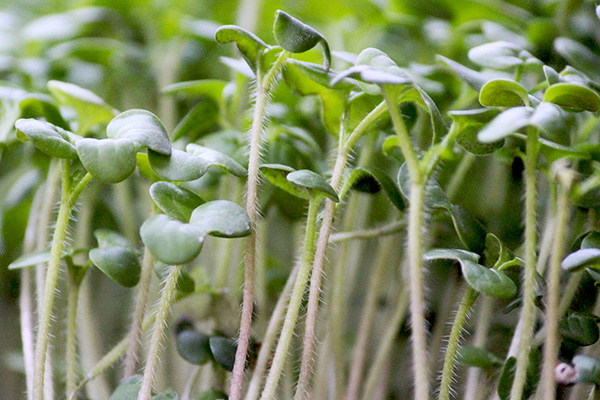
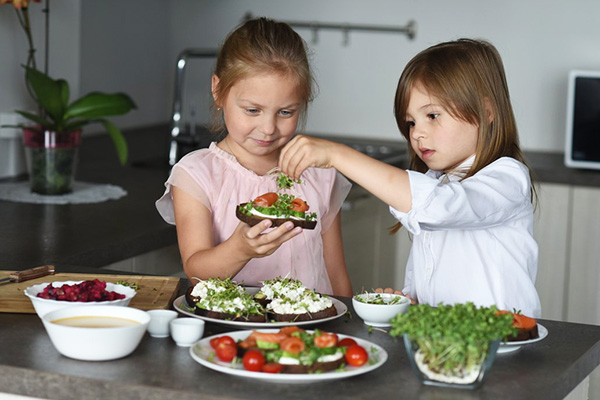
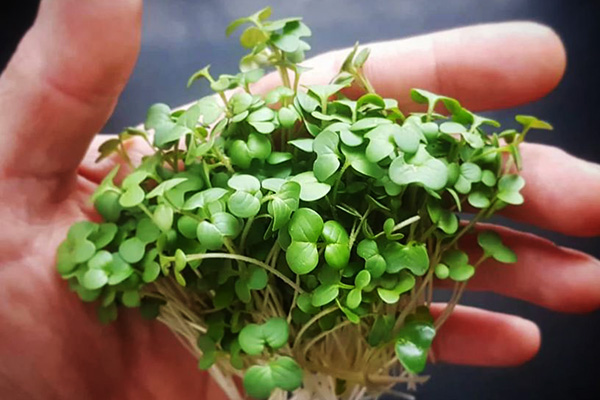
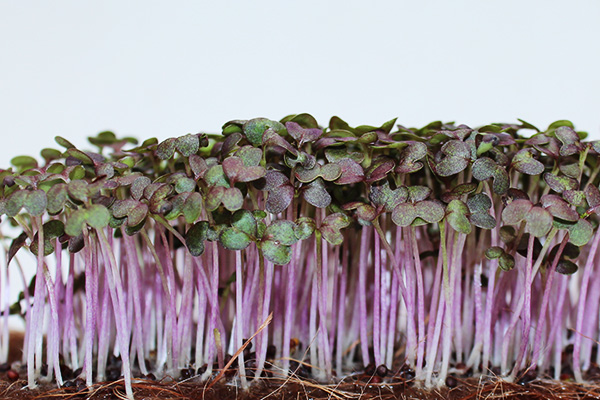
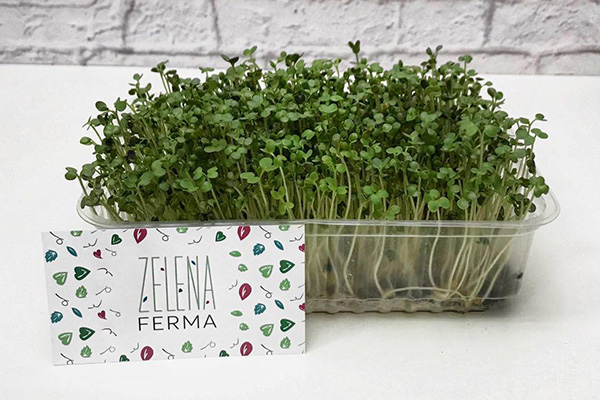
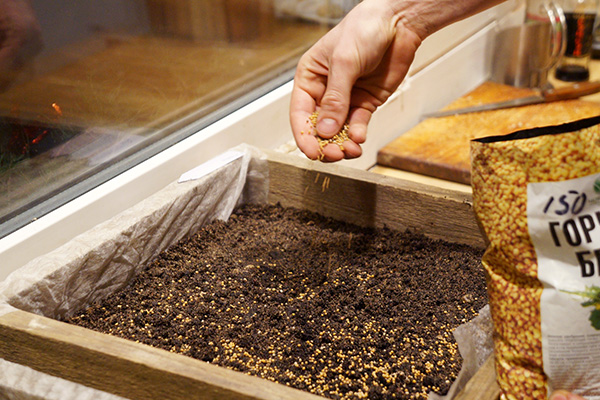
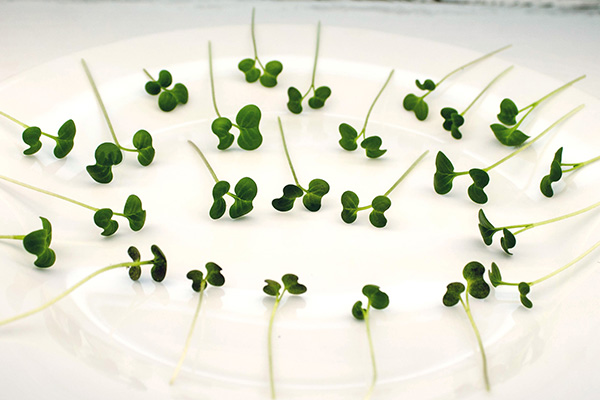

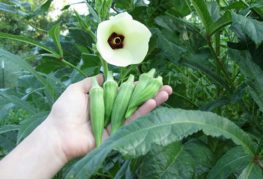
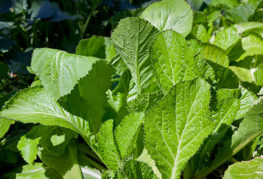
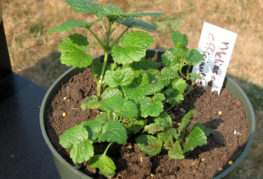
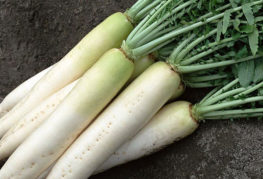
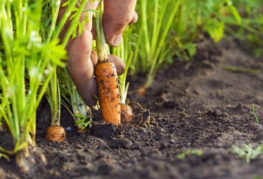
and will be published shortly.